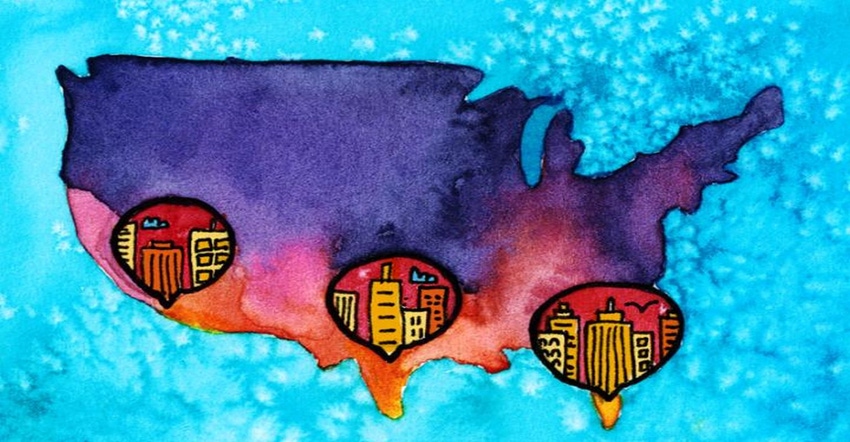One-third of the food produced in the United States goes to landfills unused. The EPA's Tribal Waste Management Program recently held a webinar explaining how this accelerates climate change and tactics to divert food waste.

The Environmental Protection Agency has several different sectors focusing their efforts on the needs specific to different communities across the nation.
One of these sectors is the Tribal Waste Management Program, which brings a magnifying glass to the communities within the tribal systems in the United States to inspect the ways waste, recycling, and compost positively or negatively impact their prosperity.
As part of the Tribal Waste Management Program, the EPA holds regular webinars to create an open stream of communication between the agency, tribal communities, and experts in the field of waste and recycling.
Each webinar is hosted by a handful of individuals who specialize in a field that plays a role in the waste systems within American tribes. These professionals share their research and information to hopefully inspire meaningful positive change across these tribes.
The most recent of these webinars was titled “Let's Talk About It: A Conversation with Tribes About Climate Change” and was held on September 29th.
This session is an installment in the Tribal Waste Management Program’s “Let’s Talk About It” series, and was centered around climate change and the role that food waste plays in accelerating that process.
“Twenty-four percent of what we put in our landfills in the U.S. is food waste” shared one of the hosts of the session, Carolyn Hoskinson, the EPA’s Director in the Office of Resource Conservation and Recovery.
“And when that food decomposes in a landfill, it releases methane–and methane is a super powerful greenhouse gas” Hoskinson goes on to explain.
The conversation this session promoted was about the different ways tribal communities can divert food waste from their landfills as a means of doing their part in curbing climate change.
The first step in solving this issue is addressing production.
Hoskinson shares that one-third of the food produced in the United States goes uneaten and ends up in landfills.
“So, a really significant fraction of all the food that we grow and create in this country is wasted, and yet at the same time, we have a very significant number of people who are food insecure–who don’t have access to sufficient nutritious healthy food,” she points out.
Hoskinson urges attendees of the session to pay attention to this idea. Though not all food can be recovered prior to entering waste systems, she wants communities to consider collecting edible food “waste” and getting it to hunger-stricken people to use as much of this food as possible.
“Isn’t that an inspiration to all of us to think about? How can we make sure that the third of the food that is currently being wasted gets to people who could really benefit from food?” Hoskinson says.
Once we know how much food is needed to feed everyone, including those who are food insecure, we can begin to produce a more accurate amount of food, therefore lessening the amount of wasted food. “What we want to do is first reduce the amount of surplus food that we generate,” she declares.
“This means either getting the food to the people who want to eat it or making sure we are being very efficient in the way that we are generating food to ensure the amount of food we generate matches the number of people we need to feed.”
Once we better adjust our production levels to align with the total number of mouths to feed, we will eliminate a majority of the food that goes to waste in this country.
One thing that cannot be recovered, however, is waste oils. This is a product that can neither be used by humans nor fed to animals after reaching the end of its use.
Hoskinson suggests using this product for energy recovery, or for her next point of discussion: composting.
Throughout the webinars, four poll questions were held to guide the conversation and provide the EPA with some insight to look into.
The first of these questions was “which best describes your tribe's composting program?”
Among attendees of this session, the leading response was “we do not have a community composting program, but would start one.”
Though not a very promising result, the response to the poll demonstrates an area of growth for the waste systems of tribal communities.
Hoskinson advocates for compost programs as a way to omit methane emissions from food waste.
“If food waste is composted instead [of being put in a landfill], those chemistries operate differently and so if it’s done correctly, it doesn’t generate the methane if the food waste was put in a landfill” explains Hoskinson.
Overall, the webinar emphasized reducing excess food production and the implementation of composting programs to actively slow down climate change.
“Climate change is an issue that affects all of us and that all of us have an opportunity to both mitigate and adapt to.”
About the Author(s)
You May Also Like




